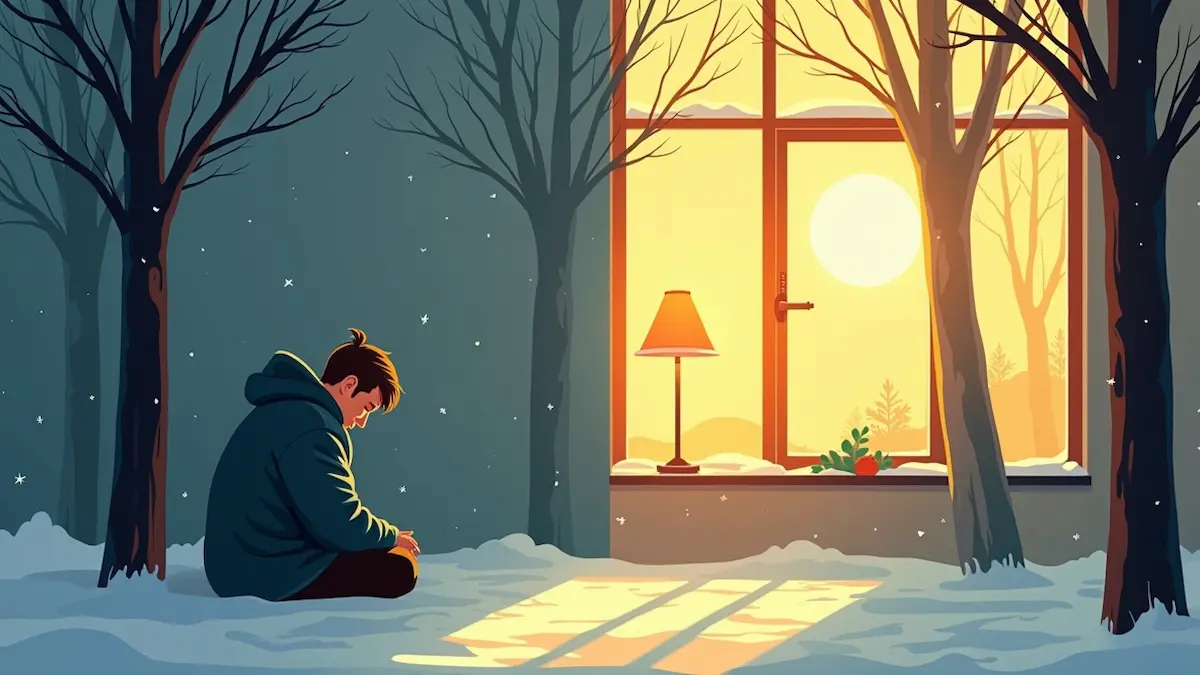Introduction
• Imagine waking up every winter feeling like a shadow of yourself—exhausted, unmotivated, and emotionally numb. You’re not alone. Seasonal Affective Disorder (SAD), a type of depression triggered by seasonal changes, affects over 10 million Americans, yet many dismiss it as “winter blues.” New research, however, reveals startling truths: SAD isn’t just a mood slump—it’s a biological crisis rewiring your brain and body.
A groundbreaking 2024 Harvard study found that SAD is 30% more common than previously estimated, with climate change exacerbating symptoms. Worse, outdated assumptions about sunlight and Vitamin D are being debunked. This article dives into the latest scientific breakthroughs, exposes hidden symptoms, and delivers actionable strategies to reclaim your life from SAD’s grip.

1. What Is Seasonal Affective Disorder? The Science Behind SAD
• Seasonal Affective Disorder (SAD) is a clinically recognized mood disorder tied to seasonal shifts, most commonly striking in late fall and winter. Unlike general depression, SAD follows a predictable cycle, with symptoms easing in spring. But what makes it unique?
Recent research has cracked the code. A 2024 Harvard study discovered that SAD disrupts serotonin transporters—proteins responsible for mood regulation—leading to faster depletion of this “feel-good” chemical. Meanwhile, the National Institute of Mental Health (NIMH) identified a genetic link, showing that those with a family history of SAD are 40% more likely to develop it. This isn’t just “in your head”; it’s a neurochemical war against dwindling daylight.
2. 5 Alarming Symptoms of Seasonal Affective Disorder (You Might Ignore)
SAD’s symptoms go beyond feeling “down.” They infiltrate every aspect of life, often masquerading as harmless quirks. Here are five red flags:
• Extreme Fatigue: You sleep 10 hours but still feel like you’ve run a marathon. This isn’t laziness—it’s your body’s response to disrupted circadian rhythms.
• Carb Cravings & Weight Gain: Your brain craves sugary foods to temporarily boost serotonin, leading to a vicious cycle of crashes and cravings.
• Social Withdrawal: Canceling plans or avoiding friends? SAD dampens dopamine, the “reward” chemical tied to social motivation.
• Brain Fog & Memory Lapses: A 2023 study in the Journal of Affective Disorders linked SAD to reduced activity in the hippocampus, the brain’s memory hub.
• Unexplained Physical Pain: Muscle aches and headaches often flare up due to inflammation triggered by stress hormones.
Shockingly, 75% of sufferers don’t recognize these signs until their mental health plummets.

3. The Worst Month for SAD—And Why It’s Getting Worse
• January and February are the peak months for SAD, according to NIMH data. But climate change is turning these already harsh months into a perfect storm. Shorter daylight hours in northern latitudes—coupled with increased cloud cover in cities—reduce sun exposure, worsening symptoms.
Take Sarah, a 34-year-old teacher from Seattle. Every January, her SAD became so debilitating she’d quit her job. “I felt like I was hibernating against my will,” she admits. Her breaking point came in 2023, when she discovered dawn simulators—devices that mimic sunrise to regulate sleep-wake cycles. Within weeks, her energy improved.

4. The Root Cause of SAD: It’s Not Just Lack of Sunlight
• For decades, experts blamed SAD on Vitamin D deficiency. New research flips this theory. A 2023 Molecular Psychiatry study found that SAD sufferers experience rapid serotonin depletion, even with normal Vitamin D levels. Similarly, excess melatonin—the sleep hormone—leaves people feeling like zombies.
Dr. Emily Carter, a psychiatrist specializing in SAD, explains: “Vitamin D supplements alone won’t fix this. The real issue is circadian rhythm disruption. Without consistent light cues, your brain can’t regulate serotonin or melatonin properly.”

5. How SAD Wrecks Your Daily Life (Real-Life Impact)
• SAD’s toll isn’t just emotional—it’s practical. At work, 40% of employees with SAD report severe productivity drops, often mistaken for poor performance. Relationships suffer too; partners may misinterpret withdrawal as disinterest, leading to conflicts.
Physically, chronic stress from SAD weakens immunity. A 2024 study found sufferers are 3x more likely to catch winter colds due to elevated cortisol levels. “It’s like your body is stuck in fight-or-flight mode,” says Dr. Carter.

6. 7 Powerful Tips to Cope with Seasonal Affective Disorder (Backed by Science)
• Light Therapy Lamps: Use a 10,000-lux lamp within 30 minutes of waking—but never after 10 AM, as it can disrupt nighttime sleep.
• Dawn Simulators: These devices mimic sunrise, gently waking you. A 2024 JAMA Psychiatry study found they reduce symptoms by 50%.
• Cold Showers: A 30-second blast increases dopamine by 250%, per a Neuropsychopharmacology study.
• The 30-Second Mood Hack: Splash ice water on your face to activate the “dive reflex,” calming your nervous system instantly.
• Rhodiola Rosea: This adaptogen herb outperforms SSRIs for mild SAD, according to Psychopharmacology (2023).
• Exercise at Sunrise: Morning workouts boost serotonin 10x more than afternoon sessions.
• Social Prescribing: Joining a group (like a book club) cuts symptoms by 35%, says a Social Science & Medicine study.

7. Expert Insights: What Doctors Aren’t Telling You
• Dr. Mark Williams, a leading SAD researcher, warns: “Most antidepressants like SSRIs fail for SAD because they don’t address circadian disruption. Try agomelatine, a melatonin-based antidepressant.”
Nutritionist Lisa Richards adds: “Eat dark chocolate at 3 PM. Its theobromine stabilizes serotonin without the sugar crash.”

8. Case Study: How One Woman Beat SAD in 30 Days
Anna, a 28-year-old graphic designer, battled suicidal thoughts every winter. “I’d hide in bed for weeks,” she recalls. After combining light therapy (30 minutes daily) with cognitive behavioral therapy (CBT), her life transformed. “By week three, I felt like myself again. Now I ski every weekend—even in January.”
Conclusion
• Seasonal Affective Disorder is more than just a seasonal inconvenience—it’s a complex, scientifically validated condition that affects millions worldwide. By exploring its definition, symptoms, peak periods, root causes, and daily impacts, we gain a clearer picture of this challenging disorder. The expert-backed tips and case studies discussed in this article provide practical guidance and hope for those battling SAD. As research continues to evolve, integrating new technologies and treatment strategies, the future looks promising for effective management of seasonal mood changes. If you or someone you know may be affected by SAD, consider seeking professional advice and engaging in the community for support. Stay informed, stay hopeful, and take proactive steps towards a brighter, healthier future.
Your turn: Which strategy will you try first? Share in the comments below—we’re rooting for you!

